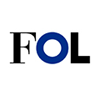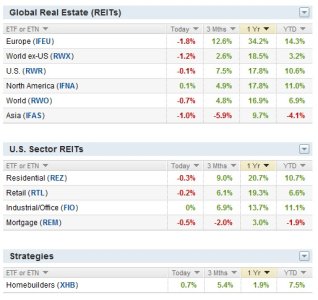Hatteras Financial Corp. - Q1 2011 Report
Hatteras Financial Corp. Announces First Quarter 2011 Financial Results
Company Release - 04/26/2011 16:01
WINSTON-SALEM, N.C.--(BUSINESS WIRE)-- Hatteras Financial Corp. (NYSE: HTS) (“Hatteras” or the “Company”) today announced financial results for the quarter ended March 31, 2011.
First Quarter 2011 Highlights
Net income of
$0.96 per weighted average share
Net income of $1.00 per weighted average share excluding the impact of the March 18 stock offering, which increased the weighted average shares outstanding
Declared a $1.00 per share dividend
Quarter end book value increased 5.1% to $26.11 per share
Net return on average equity of 15.29%
Average net interest spread of 2.15%
Completed two accretive equity offerings raising approximately $794 million
Annualized rate of scheduled and unscheduled principal repayments of 22.44%
Annualized total expense ratio of 1.03% of average shareholders’ equity
First Quarter 2011 Results
During the quarter ended March 31, 2011, the Company earned net income of $57.2 million or $0.96 per diluted common share, compared to net income of $45.6 million or $0.99 per diluted common share during the quarter ended December 31, 2010. During the quarter, the Company significantly increased earning assets and book value while investing the proceeds of two equity offerings. These two offerings increased the Company’s equity capital to $1.9 billion at March 31, 2011.
“The first quarter was eventful for Hatteras as the Company significantly grew its equity base,” said Michael R. Hough, the Company’s Chief Executive Officer. “We are pleased to have grown the Company at a time when we can invest capital at favorable margins and improve the long-term return profile of the Company. The benefits from the equity raises include accretion of book value, a stronger liability portfolio, and the addition of attractive and relatively more predictable assets. We have invested the capital as anticipated in short duration mortgage-backed securities, and hedged them defensively, and look forward to enjoying the benefits going forward.”
Net interest income for the quarter ended March 31, 2011 was $61.1 million, compared to $43.2 million for the quarter ended December 31, 2010. The Company’s average earning assets increased to $10.9 billion for the first quarter of 2011 from $8.0 billion in the fourth quarter of 2010, and the net interest margin increased to 2.15% for the first quarter of 2011 from 2.04% in the fourth quarter of 2010. The increase in the net interest margin was driven in large part by the decrease in the Company’s cost of funds. The Company’s average repurchase agreement (repo) rate dropped to 0.30% in the first quarter of 2011, from 0.44% in the fourth quarter of 2010, on all outstanding short-term (less than 30 days) repo positions. Operating expenses were $3.9 million for the first quarter of 2011 versus $3.4 million for the fourth quarter of 2010, but the annualized expense ratio dropped to 1.03% of shareholders’ equity based on average equity for the quarter ended March 31, 2011 versus 1.13% for the prior quarter due to the increase in shareholder’s equity.
The Company’s portfolio, consisting of Fannie Mae and Freddie Mac guaranteed mortgage securities (agency securities), increased to $13.0 billion at March 31, 2011, compared to $9.6 billion at the end of the previous quarter. The portfolio’s weighted average coupon was 3.69% for the first quarter of 2011, compared to 3.94% for the fourth quarter of 2010, primarily reflecting lower reinvestment rates on new security purchases. The annualized yield on average assets declined to 3.20% for the first quarter of 2011, compared to 3.39% for the fourth quarter of 2010, primarily as a result of recent bond purchases. The annualized cost of funds on average liabilities (including hedges) was 1.05% in the first quarter of 2011, compared to 1.35% in the fourth quarter of 2010. This decrease was partly due to lower repurchase agreement rates, but also due to the addition of new swaps at lower rates and the expiration of higher swaps and other fixed rate borrowings that were replaced at lower cost.
Dividend
The Company declared dividends of $1.00 per share of common stock with respect to the quarter ended March 31, 2011, which equaled the $1.00 per share dividend for the quarter ended December 31, 2010. Using the closing share price of $28.12 on March 31, 2011, the first quarter dividend equates to an annualized dividend yield of
14.2%.
Common Stock Offerings
On January 10, 2011, the Company completed a secondary public offering of 11,500,000 shares of common stock, including 1,500,000 shares pursuant to the underwriters’ overallotment option, at a price to the public of $28.75 per share, for net proceeds of $325.7 million after the payments of underwriting discounts and expenses,. On March 23, 2011, the Company completed a secondary public offering of 16,675,000 shares of its common stock, including 2,175,000 shares pursuant to the underwriters’ overallotment option, at a price to the public of $28.50 per share, for net proceeds of approximately $468.8 million after the payment of underwriting discounts and expenses. Both of these offerings were completed at a premium to both book value and paid-in-capital per share. The Company estimates that paid-in-capital per share increased $2.05, or 9.1%, as a result of these offerings.
Portfolio
The Company’s portfolio of agency securities totaled $13.0 billion at March 31, 2011 and consisted of 5.6% adjustable-rate mortgages (“ARMs”) with 18 or fewer months to reset, 10.7% ARMs with 19 to 36 months to reset, 56.5% ARMs with 37 to 60 months to reset, 25.8% ARMs with 61 to 84 months to reset, and 1.4% ARMs with 85 to 120 months to reset. Of the Company’s total portfolio, 71.6% are supported by Fannie Mae and 28.4% are supported by Freddie Mac. At March 31, 2011, the weighted-average term to the next interest rate reset date was approximately 55 months, not adjusting for repayments.
During the first quarter of 2011, the expense of amortizing the premium on the Company’s securities was $12.9 million, compared to $11.6 million during the fourth quarter of 2010. Despite the significantly larger portfolio, the increase in amortization expense was muted, as prepayment rates fell meaningfully due to slower refinancing activity. The weighted-average principal repayment rate (scheduled and unscheduled principal payments as a percentage of the weighted-average portfolio, on an annual basis) during the first quarter of 2011 was 22.4%, compared to 31.3% during the fourth quarter of 2010.
Portfolio Financing and Leverage
At March 31, 2011, the Company financed its portfolio with approximately $11.5 billion of borrowings under repurchase agreements bearing fixed interest rates until maturity. The Company’s repo debt-to-shareholders’ equity ratio at March 31, 2011, was 6.1 to 1. The Company’s repurchase agreements had a weighted-average term of approximately 24 days. The Company also uses interest rate swap agreements to synthetically extend the fixed interest period of these liabilities and hedge against the interest rate risk associated with financing the Company’s portfolio. As of March 31, 2011, the Company had entered into interest rate swaps with a notional amount of $6.5 billion. The swap agreements, which are indexed to 30-day LIBOR, have an average remaining term of 38 months at an average fixed rate of 1.94%.
Book Value
The Company’s book value (shareholders’ equity) per share on March 31, 2011 was $26.11, up $1.27, or 5.11%, from the per share book value of $24.84 on December 31, 2010. The increase in book value during the quarter represents changes in mortgage-backed securities (“MBS”) and swap values, and accretion from the Company’s capital raises. On a per share basis, the book value at March 31, 2011 consisted of $24.67 of common equity, ($0.06) of retained earnings, $1.67 of unrealized gains on agency securities, and ($.17) of unrealized losses on interest rate swaps.





